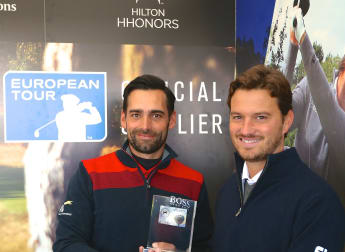By Will Pearson, europeantour.com
at Hong Kong Golf Club
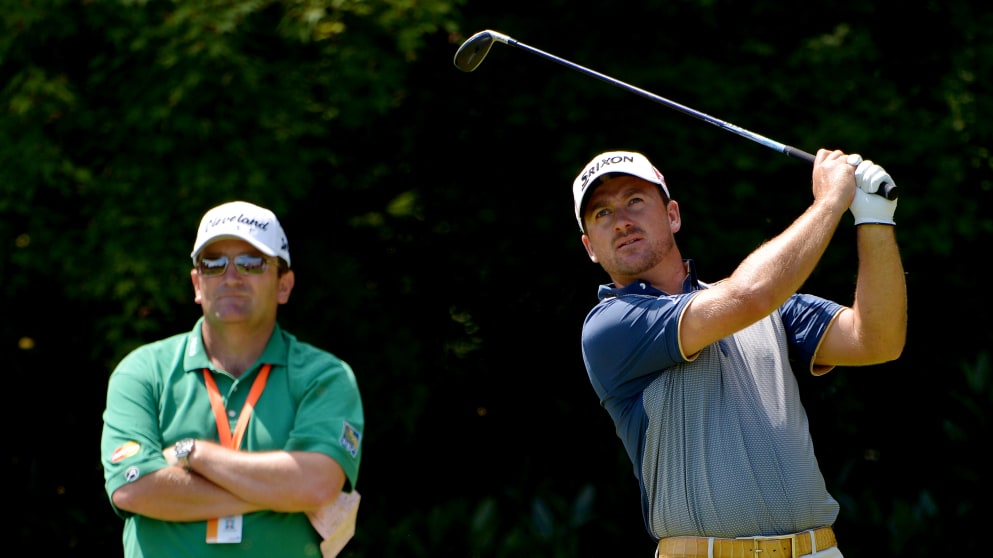
Ahead of this week’s UBS Hong Kong Open, europeantour.com explores ever-present host venue Hong Kong Golf Club with the help not of a player this time but of a caddie, as Graeme McDowell’s long-time bag-man Ken Comboy reveals all.
Veteran English looper Comboy has partnered McDowell on fairways around the world for the last ten years, guiding the Northern Irishman to victory in the 2010 US Open Championship at Pebble Beach along with a number of other global triumphs and has also carried for the Portrush man at four Ryder Cups.
This week, as the pair return to the UBS Hong Kong Open for the first time in five years, ‘Kenny’, as he is affectionately referred to by his employer, has dug out his yardage books of years past and taken a trip around the historic club with his partner in crime to re-familiarise himself with what is a very traditional layout.

First established on a different site in 1889 as Royal Hong Kong Golf Club, the club moved to its current Fanling location just north of the city centre in 1911 before the ‘New Course’, designed by LS Greenhill, was officially opened in 1931.
This year hosting the Hong Kong Open for a 57th straight year – only Augusta and the Masters have been paired longer – Hong Kong Golf Club has over the last few years been used as a composite course between holes from the New and Eden Courses.
Not long by modern standards at 6,699 yards and a par of 70, Hong Kong Golf Club is a narrow, tree-lined layout and the general consensus is that the caddies will be earning their crust this week. Step forward Mr Comboy…
The Player/Caddie Bond
“I’ve worked for Graeme for the last ten years so our relationship is pretty settled at this stage,” says Comboy, who has also worked for the likes of Andrew Coltart and Thomas Bjorn in the past. “He almost knows what I’m going to say before I say it and I know all his little idiosyncrasies on the course and how he acts.
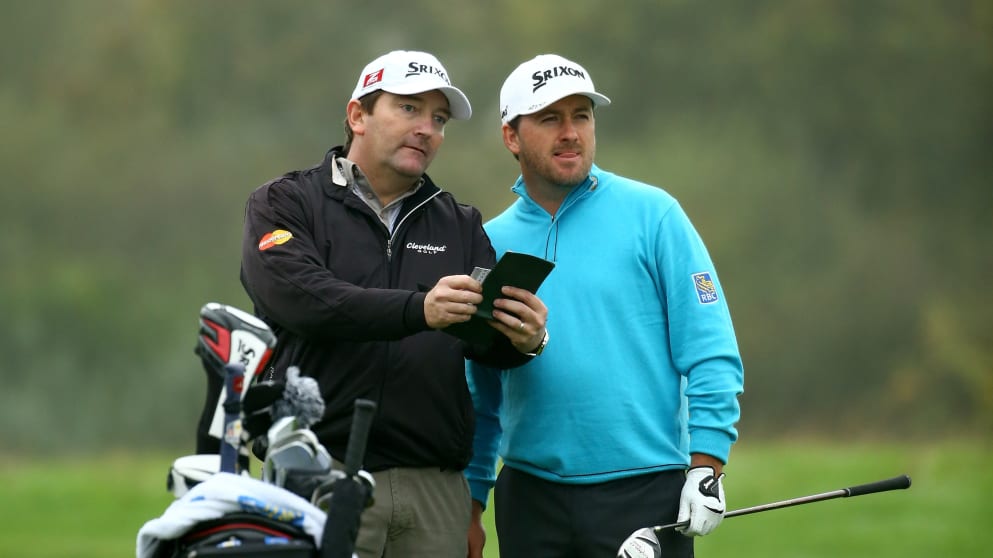
“Obviously we are pretty familiar with each other’s moves on the golf course but the player/caddie relationship is built on trust; he has to trust what I tell him and I have to see him listening to what I’m saying, committing to what I’m telling him.
“There’s no point in me giving Graeme information he doesn’t want to hear, suggesting stuff I know he won’t want to do, so it’s about saying the right thing at the right time and over the years you learn how to do that.”
Test
Comboy reflects: “On a golf course like this the player/caddie relationship is tested because there are a few choices off the tees and whenever there are choices the players get frustrated if the choice they’ve made doesn’t pay off – they automatically wish they had hit more or less club, ‘why didn’t we do this or that?’ so it can be a trying week on that relationship in Hong Kong.
“But Graeme’s had some success here in the past, it’s a course he likes and we’ve been around here enough to know we’ve got game plans. They might not pay off every day but if we stick to it we should be there or there abouts come Sunday.”
Overview
"It's a very tight, tricky, fiddly golf course with fairways at a premium,” continues Mancunian Comboy. “The greens are quite small so if you can hit the fairways you give yourself a better chance of finding more putting surfaces.
It’s a strategic golf course and not long at all. There are certain holes you can take on and others where you need to be very accurate.
Ken Comboy
“Around this course, most guys will be making quite a few birdies so it’s important to keep the bogeys off the card because they will make your job doubly difficult in trying to get to 15 or 16 under - which has historically been around the mark to lift the trophy.”
The Grass
“The way that this Asian grass is – especially this year being a little longer than normal – it’s very tricky to chip around the greens, knowing how it’s going to react. Obviously the Asian golfers are a bit more used to this style of grass than we are but the ball sits down at the bottom and looks like it’s buried but it’s actually quite light and comes out really fast so it takes a bit to get your head around it.”
HK GC’s unique challenges
Asked what in particular is going to make this job difficult this week, Comboy’s boss, ‘GMac’, chips in again with the familiar theme: "Predicting how it's going to come out of this grass!"
With a thick mix of lush Bermuda and zoysia grass used across the course, judgement of yardages and club choices are going be more important than ever this week in the city known as the ‘Pearl of the Orient’.
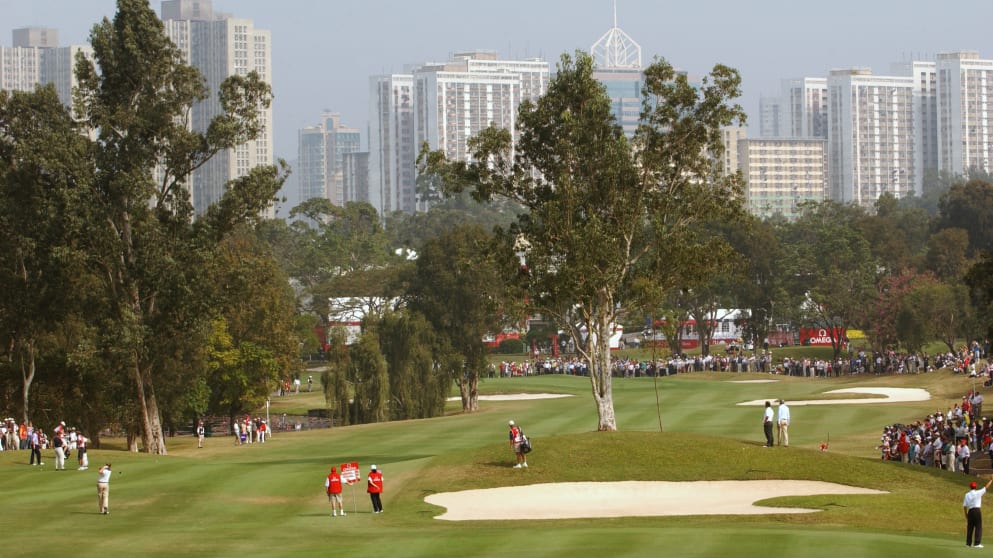
"A lot of the time, it doesn't matter how sensibly you play from the tee, you are going to finish up in the rough and then when you're there picking the way that the ball is going to come out of the lie is key,” agrees Comboy.
“The greens are small so you've always got to be trying to land the ball on the front edge of the green when you're coming out of the rough. The way the grass works here is if you land short of the green it stops, if you land on the green it releases through, so certainly landing in that nought to five yard area on the front gives you the best chance to stop on the back of the green and therefore having a putt instead of a chip.
“And the fewer times you are chipping around this golf course the more chance you've got of saving pars and not making bogeys.
"Once you are in trouble the key is to not compound the error by getting a flier into a place you can't get up and down from. You'll see most of the field this week at some point hitting shots and then looking incredulously at their ball as it bounds through the back of the green.
“Because it doesn't matter how many times you play in this grass, it makes the ball do funny things and that's tough to predict. So that's our main job this week as caddies, to try to limit the damage once they are in trouble."
Our main job this week as caddies is to try to limit the damage once they are in trouble.
Ken Comboy
Key holes
The two par fives – the 551-yard third and 529-yard 13th
"They are going to be pivotal because you have to score on them. The third is an elevated tee shot down to a fairway which really narrows at around 280 yards with a big bunker on the right hand side and a tree in front of it so if you find the sand then the tree is in the way for your second as you lay up. Then if you're too far down the left you're in the rough, and there's a little hazard down there too, so it's a tight tee shot for us to discuss on the tee. But if you do manage to find the fairway then it becomes a two-shotter, a second shot where you can easily reach the green and obviously set up a birdie or eagle chance.
"And then the back nine par five - the 13th - is essentially a long par four for these guys. It's the biggest green on the course - twinned with the 17th - so again if we can get an accurate drive there then it sets up a reasonably inviting second shot to a big putting surface and another eagle opportunity.
"They are two key scoring holes for sure. I think you'll find the guys that compete this week will play the par fives in no less than six or seven under par for the week."
The 410-yard par four 18th
"It's a great hole which has produced so much drama over the years - people holing out and it can yield birdies but also tears. It's a real great finisher.
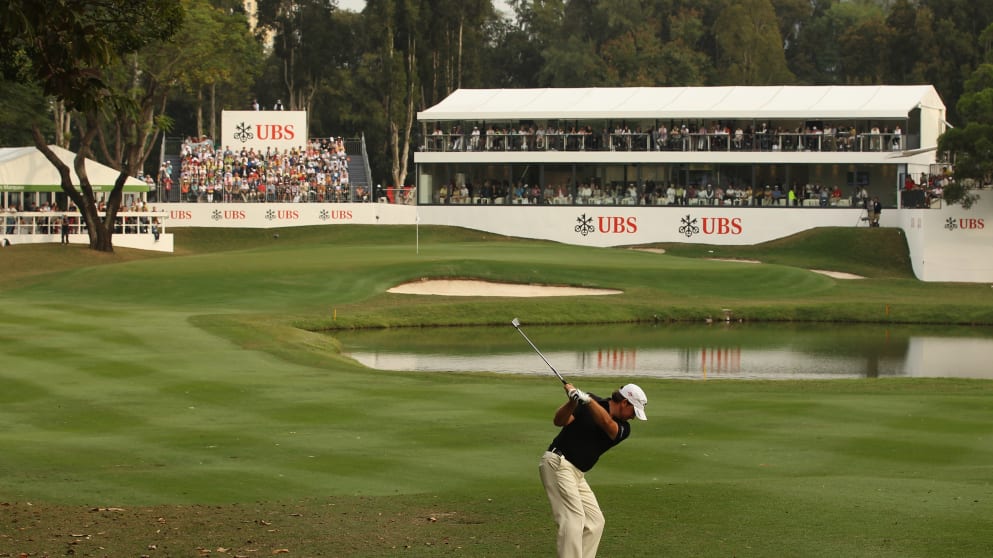
"It's a tee shot that if you hit it straight you can really set up a birdie chance but if you get in trouble it's very difficult to find the green. We are looking to land the ball around 235 yards off the tee and hopefully for it to chase out to about 255 leaving an eight or nine iron into the green. You'll see guys taking it on and you'll see guys playing it back so a lot of options.”
